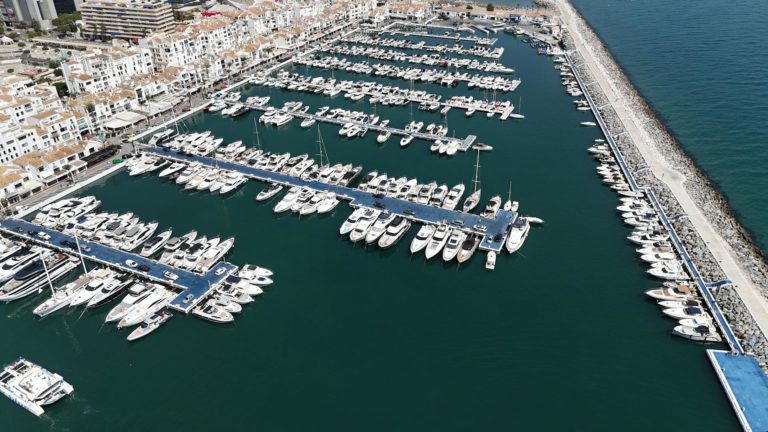
Golf development is ever-evolving, and it’s important to stay on top of trends in the industry. While they may be general in nature, knowing what is being incorporated into new golf developments is one way to gauge the ways the industry and golfers’ demands are changing.
For the best photo of what’s happening right now, we turned to golf development expert Jeremy Slessor, Managing Director of European Golf Design. His company is a joint venture between the European Tour and IMG, and has successfully developed highly rated courses all over the world. Jeremy’s more than 25 years with EGD have given him unique insight into the technical and financial requirements of golf development, as well as how to leverage the strengths of each setting to best advantage.
For projects recently completed or currently in development, here are 5 of the new focal points for development, and some of the ways their definitions are changing:
Sustainability
A buzz word for years, “sustainability” in golf development in the past tended to be exclusively related to economic sustainability or environmental sustainability, depending on the focus of the particular golf course. But now, in 2020, it is commonly acknowledged that there are four pillars to sustainability: economic, environmental, social, and cultural, and that each has relevance in every project. Most importantly, each pillar must be addressed to arrive at a development solution that is truly sustainable; if one is neglected, the others cannot compensate.
Environmentally, each project, and each element of that golf course development project, must have a positive impact in terms of protecting the landscape, creating habitats, and increasing the diversity of flora and fauna. Natural resources must be used as efficiently as possible; non-natural resources should be used as minimally as possible.
From a social standpoint, developers must consider the impact a project will have on local and regional employment, as well as the impact it will have on the tax base. What can the development do to increase revenue generation and employment beyond the limits of the project? Culturally, how will the development contribute to local customs and heritage? If all these questions, and others, can be answered positively, and if the economics stand up for themselves, then there is every indication a successful project can be developed.
Learning
We are seeing increasing numbers of projects choosing to develop their learning facilities. Academies, short-game areas, and shorter courses are more prevalent now than ever before. This is especially true in destinations with golf course housing development, where someone who has never played golf, but has purchased a house, now has an opportunity right at their front door.
As a business, golf has in the past been accused of not catering well to the beginner or anyone that has not grown up in the traditions of the game. That’s changing as more and more golf course development companies realise, especially in parts of the world where golf is a relatively new sport, that while ex-pat or tourism play is important, it is equally important to develop a local market.
The best way to do that is to have proper facilities where people can learn to play in comfort and safety. Properly run, academies can add significant revenue streams to the overall bottom line. Similarly, in developments that offer a “full-length” golf course, adding a shorter course can offer golf that is less time-consuming and more forgiving for the poorer player, while still providing the same level of quality as the overall development.
Flexibility
The old models of club or resort membership are changing, and so too the golf club business plan. Numbers of categories of membership are being reduced, and the traditional 5-versus-7-day membership model is fading.
Many golf facilities are moving to membership based on points. This means that, following the example of the airline and hotel industries, they offer different rates (“points”) for different days or, even, different times within a day. For example, a tee time on a Saturday morning would cost more points than a Tuesday afternoon.
This allows golfers to tailor, as much as possible, their membership level to their situation, and is proving very popular where it is being offered. This new flexibility and creativity is opening doors and economic opportunities not only for users, who now demand a higher degree of personalization in everything they do, but for course owners as well. And there are a lot of very interesting data to be gleaned from allowing golfers to set their own timetables and frequency of play.
Families
Golf is no longer a male-gender-dominated sport. There is still much to do to achieve true balance, but in many countries around Europe, particularly in Scandinavia, this objective is getting very close.
Women and children are already finding exponentially more opportunities to play than even a few years ago. And this trend can and should remain on the rise, as a factor of both social and economic sustainability. Logically, the broader the audience, the better the market for the course you are developing. Involving children deepens the love of the game from an earlier age, and provides opportunities for the expansion of academies and holiday programmes as well.
And shifts in our societal expectations have made the idea of a family golf day appealing and possible. Golf is no longer just an escape for one member of the family. Every member can have his or her time to relax during a round…or enjoy a game together!
Rules
We have seen that, particularly in resort settings, rules (especially relating to dress codes) are being relaxed. If you want to play golf in shorts and a pair of sandals, why not? If you want to walk off the beach and straight onto the course, why should you have to change clothes to do so?
These are just a few of the questions that people are beginning to ask. Each course or resort must find its own way, adapting itself to its players and their expectations, of course. But the fact that many golf destinations are asking these questions is an indicator that golf development and strategy is evolving with the times. Golf course planning remains a fascinating field, always offering new surprises.



